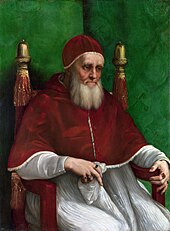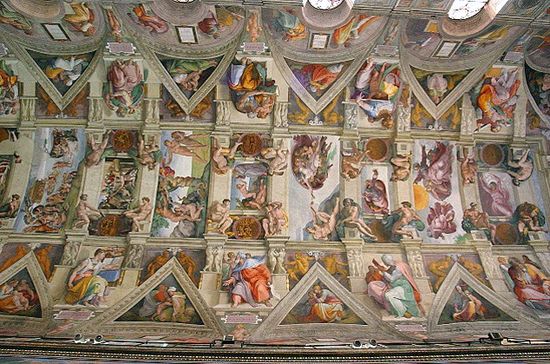



















Jennifer Aniston’s tattoo is her first-ever, with the actress recently getting her beloved late dog’s name “Norman” inked on the inside of her right foot, reports Just Jared.
In an interview with James Lipton for “Inside the Actors Studio” on Thursday, the 42-year-old revealed Norman was her Welsh corgi-terrier mix, who died in May at 15 years old.
Before passing away, Norman had regularly accompanied Aniston to film studios and her former “Friends” set.
She has said in the past, “Norman goes with me on location – I’ve got to take Norman. He’s my baby boy.”
Aniston and her dog were pictured together on many occasions, from going for walks on the beach, attending photo shoots together and going on vacation, Just Jared reports.
When Ms Aniston was seen in New York City last week, the tattoo was barely discernible, but there nonetheless.
The tattoo had been more visible when the actress was wearing sandals the previous day.
Aniston has only worn a temporary tattoo of a heart on her stomach in the past to play the kooky titular lead in “Along Came Polly,” reports the Daily Mail.
Her new boyfriend Justin Theroux, on the other hand, is heavily tattooed - one of his tattoos reads “Odi et Amo,” which translates to “I hate and I love.” 2012 chevy camaro |  2012 chevy camaro |
 2011 camaro |  |

2012 camaro

2012 camaro


The Sistine Chapel ceiling, painted by Michelangelo between 1508 and 1512, at the commission of Pope Julius II, is one of the most renowned artworks of the High Renaissance. The ceiling is that of the large Papal Chapel built within the Vatican between 1477 and 1480 by Pope Sixtus IV after whom it is named the Sistine Chapel. The chapel is the location for Papal Conclaves and many important services.[1]
The ceiling's various painted elements form part of a larger scheme of decoration within the Chapel, which includes the large fresco The Last Judgment on the sanctuary wall, also by Michelangelo, wall paintings by a team of the regarded painters of the late 15th century including Sandro Botticelli, Domenico Ghirlandaio and Pietro Perugino, and a set of large tapestries by Raphael, the whole illustrating much of the doctrine of the Catholic Church.[2][3]
Central to the ceiling decoration are nine scenes from the Book of Genesis of which the Creation of Adam is the best known, having an iconic standing equalled only by Leonardo da Vinci's Mona Lisa, the hands of God and Adam being reproduced in countless imitations.

Pope Julius II was a "warrior pope" who in his papacy undertook an aggressive campaign for political control, to unite and empower Italy under the leadership of the Church. He invested in symbolism to display his temporal power such as his procession, in the Classical manner, through a triumphal arch in a chariot after one of his many military victories. It was Julius who began the rebuilding of St. Peter's Basilica in 1506, as the most potent symbol of the source of papal power.[4]
In the same year, 1506, Julius II conceived a program to paint the ceiling of the Sistine Chapel.[5] The walls of the chapel had been decorated twenty years earlier. The lowest of three levels is painted to resemble draped hangings. The middle level contains a complex scheme of frescoes illustrating the Life of Christ on the right side and the Life of Moses on the left side. It was carried out by some of the most renowned Renaissance painters: Botticelli, Ghirlandaio, Perugino, Pinturicchio, Signorelli and Cosimo Rosselli.[6] The upper level of the walls contains the windows, between which are painted pairs of illusionistic niches with representations of the first thirty-two popes.[7] A draft by Matteo d'Amelia indicates that the ceiling was painted blue like that of the Arena Chapel and decorated with gold stars, possibly representing the zodiacal constellations. It is probable that because the chapel was the site of regular meetings and Masses of an elite body of officials known as the Papal Chapel who would observe the decorations and interpret their theological and temporal significance, it was Pope Julius' intention and expectation that the iconography of the ceiling was to read with many layers of meaning.[8]
Michelangelo, who was not primarily a painter but a sculptor, was reluctant to take on the work. Also, he was occupied with a very large sculptural commission for the Pope's own tomb. The Pope was adamant, leaving Michelangelo no choice but to accept.[9] But a war with the French broke out, diverting the attention of the Pope, and Michelangelo fled from Rome to continue sculpting. The tomb sculptures, however, were never to be finished because in 1508 the Pope returned to Rome victorious and summoned Michelangelo to begin work on the ceiling. The contract was signed on 10 May 1508.[5]
The scheme proposed by the pope was for twelve large figures of the Apostles to occupy the pendentives.[10] However Michelangelo negotiated for a grander, much more complex scheme and was finally permitted, in his own words, "to do as I liked".[11] His scheme for the ceiling eventually comprised some three hundred figures and took four years to execute, being completed in 1512.[5][9] It is unknown and is the subject of much speculation among art historians as to whether Michelangelo was really able to "do as he liked".[10] It has been suggested that Egidio da Viterbo was a consultant for the Theology.[12] Many writers consider that Michelangelo had the intellect, the Biblical knowledge and the powers of invention to have devised the scheme himself. This is supported by Condivi's statement that Michelangelo read and reread the Old Testament while he was painting the ceiling, drawing his inspiration from the words of the scripture, rather than from the established traditions of sacral art.[13] There was a total of 343 figures painted on the ceiling.


In order to reach the chapel's ceiling, Michelangelo designed his own scaffold, a flat wooden platform on brackets built out from holes in the wall near the top of the windows, rather than being built up from the floor which would have involved a massive structure and would have meant that the chapel was unavailable for services. Mancinelli speculates that this was in order to cut the cost of timber.[14] According to Michelangelo's pupil and biographer Ascanio Condivi, the brackets and frame which supported the steps and flooring were all put in place at the beginning of the work and a lightweight screen, possibly cloth, was suspended beneath them to catch plaster drips, dust and splashes of paint.[15] Only half the building was scaffolded at a time and the platform was moved as the painting was done in stages.[14] The areas of the wall covered by the scaffolding still appear as unpainted areas across the bottom of the lunettes. The holes were re-used to hold scaffolding in the latest restoration.
Contrary to popular belief, he painted in a standing position, not lying on his back. According to Vasari, "The work was carried out in extremely uncomfortable conditions, from his having to work with his head tilted upwards".[9] Michelangelo described his physical discomfort in a humorous sonnet accompanied by a little sketch (see section Quotations).
The painting technique employed was fresco, in which the paint is applied to damp plaster. Michelangelo had been apprenticed in the workshop of Domenico Ghirlandaio, one of the most competent and prolific of Florentine fresco painters, at the time that the latter was employed on a fresco cycle at Santa Maria Novella and whose work was represented on the walls of the Sistine Chapel.[16] At the outset, the plaster, intonaco, began to grow mold because it was too wet. Michelangelo had to remove it and start again. He then tried a new formula created by one of his assistants, Jacopo l'Indaco, which resisted mold, and entered the Italian building tradition.[15]

Because he was painting fresco, the plaster was laid in a new section every day, called a giornata. At the beginning of each session, the edges would be scraped away and a new area laid down.[14] The edges between giornate remain slightly visible, thus they give a good idea of how the work progressed. It was customary for fresco painters to use a full-sized detailed drawing, a cartoon, to transfer a design onto a plaster surface – many frescoes show little holes made with a stiletto, outlining the figures. Here Michelangelo broke with convention; once confident the intonaco had been well applied, he drew directly onto the ceiling. His energetic sweeping outlines can be seen scraped into some of the surfaces,[nb 1] while on others a grid is evident, indicating that he enlarged directly onto the ceiling from a small drawing.
Michelangelo painted onto the damp plaster using a wash technique to apply broad areas of colour, then as the surface became drier, he revisited these areas with a more linear approach, adding shade and detail with a variety of brushes. For some textured surfaces, such as facial hair and woodgrain, he used a broad brush with bristles as sparse as a comb. He employed all the finest workshop methods and best innovations, combining them with a diversity of brushwork and breadth of skill far exceeding that of the meticulous Ghirlandaio.[nb 2]
The work commenced at the end of the building furthest from the altar, with the latest of the narrative scenes, and progressed towards the altar with the scenes of the Creation.[12] The first three scenes, from the story of Noah, contain a much larger number of small figures than the later panels. This is partly because of the subject matter, which deals with the fate of Humanity, but also because all the figures at that end of the ceiling, including the prophets and Ignudi, are smaller than in the central section.[17] As the scale got larger, Michelangelo's style became broader, the final narrative scene of God in the act of Creation was painted in a single day.[18]

The bright colours and broad, cleanly defined outlines make each subject easily visible from the floor. Despite the height of the ceiling the proportions of the Creation of Adam are such that when standing beneath it, "it appears as if the viewer could simply raise a finger and meet those of God and Adam". Vasari tells us that the ceiling is "unfinished", that its unveiling occurred before it could be reworked with gold leaf and vivid blue lapis lazuli as was customary with frescoes and in order to better link the ceiling with the walls below it which were highlighted with a great deal of gold. But this never took place, in part because Michelangelo was reluctant to set up the scaffolding again, and probably also because the gold and particularly the intense blue would have distracted from his painterly conception.[9]
Some areas were, in fact, decorated with gold: the shields between the Ignudi and the columns between the Prophets and Sibyls. It seems very likely that the gilding of the shields was part of Michelangelo's original scheme since they are painted to resemble a certain type of parade shield, a number of which still exist and which are decorated in a similar style with gold.
Section reference.[9][14][15][19]
The overt subject matter of the ceiling is the doctrine of humanity's need for Salvation as offered by God through Jesus. It is a visual metaphor of Humankind's need for a covenant with God. The Old Covenant of the Children of Israel through Moses and the New Covenant through Christ had already been represented around the walls of the chapel.[2]

The main components of the design are nine scenes from the Book of Genesis, of which five smaller ones are each framed and supported by four naked youths or Ignudi. At either end, and beneath the scenes are the figures of twelve men and women who prophesied the birth of Jesus. On the crescent-shaped areas, or lunettes, above each of the chapel's windows are tablets listing the Ancestors of Christ and accompanying figures. Above them, in the triangular spandrels, a further eight groups of figures are shown, but these have not been identified with specific Biblical characters. The scheme is completed by four large corner pendentives, each illustrating a dramatic Biblical story.[17]
The narrative elements of the ceiling illustrate that God made the World as a perfect creation and put humanity into it, that humanity fell into disgrace and was punished by death and by separation from God. Humanity then sank further into sin and disgrace, and was punished by the Great Flood. Through a lineage of Ancestors – from Abraham to Joseph – God sent the saviour of humanity, Christ Jesus. The coming of the Saviour was prophesied by Prophets of Israel and Sibyls of the Classical world. The various components of the ceiling are linked to this Christian doctrine.[17] Traditionally, the Old Testament was perceived as a prefiguring of the New Testament. Many incidents and characters of the Old Testament were commonly understood as having a direct symbolic link to some particular aspect of the life of Jesus or to an important element of Christian doctrine or to a sacrament such as Baptism or the Eucharist. Jonah, for example was readily recognisable by his attribute of the large fish, and was commonly seen to symbolised Jesus' death and resurrection.[3]

While much of the symbolism of the ceiling dates from the early church, the ceiling also has elements that express the specifically Renaissance thinking which sought to reconcile Christian theology with the philosophy of Humanism.[20] During the 15th century in Italy, and in Florence in particular, there was a strong interest in Classical literature and the philosophies of Plato, Socrates and other Classical writers. Michelangelo, as a young man, had spent time at the Humanist academy established by the Medici family in Florence. He was familiar with early Humanist-inspired sculptural works such as Donatello's bronze David, and had himself responded by carving the enormous nude marble David which was placed in the piazza near the Palazzo Vecchio, the home of Florence's council.[21] The Humanist vision of humanity was one in which people responded to other people, to social responsibility and to God in a direct way, not through intermediaries, such as the Church.[22] This conflicted with the Church's emphasis. While the Church emphasized humanity as essentially sinful and flawed, Humanism emphasized humanity as potentially noble and beautiful.[nb 3] These two views were not necessarily irreconcilable to the Church, but only through a recognition that the unique way to achieve this "elevation of spirit, mind and body" was through the Church as the agent of God. To be outside the Church was to be beyond Salvation. In the ceiling of the Sistine Chapel, Michelangelo presented both Catholic and Humanist elements in a way that does not appear visually conflicting. The inclusion of "non-biblical" figures such as the Sibyls or Ignudi is consistent with the rationalising of Humanist and Christian thought of the Renaissance. This rationalisation was to become a target of the Counter Reformation.
The iconography of the ceiling has had various interpretations in the past, some elements of which have been contradicted by modern scholarship[nb 4] and others – such as the identity of the figures in the lunettes and spandrels – continue to defy interpretation.[23] Modern scholars have sought, as yet unsuccessfully, to determine a written source of the theological program of the ceiling, and have questioned whether or not it was entirely devised by the artist himself, who was both an avid reader of the Bible and a genius.[24] Also of interest to some modern scholars is the question of how Michelangelo's own spiritual and psychological state is reflected in the iconography and the artistic expression of the ceiling.[nb 5]
 Birth Name: Nadine Alexandra Dewi Ames
Birth Name: Nadine Alexandra Dewi Ames


Below are the latest photos of Nadine Alexandra Dewi Ames, the newly crowned Puteri Indonesia 2010 or Miss UNiverse Indonesia 2011. She was crowned on October 8 at the Jakarta Convention Center in Jakarta. Nadine will represent Indonesia in Miss Universe 2011.

Nadine Alexandra Dewi Ames is the new Puteri Indonesia 2010

Nadine is 19 year old and stands 1.70 m.

Nadine will represent Indonesia in Miss Universe 2011.

Nadine Alexandra Dewi Ames being crowned Puteri Indonesia 2010 by Miss Universe Navarrete
Photo Credit: Reuters, Beauty Pageant News.

 Birth Name: Ivian Lunaso
Birth Name: Ivian Lunaso l Sarcos Colmenares
l Sarcos Colmenares





